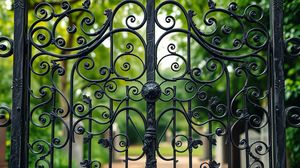
The gravestone of Daniel Defoe in Bunhill Fields Burial Ground is a significant landmark for literary enthusiasts and history buffs alike. Bunhill Fields, nestled in the heart of London, is a historic burial ground that has been the final resting place for many notable figures since the 17th century. Among them is Daniel Defoe, the celebrated author of "Robinson Crusoe" and "Moll Flanders," who was interred here in 1731.
Defoe's gravestone is an intriguing memorial that stands as a testament to his enduring legacy in English literature. Despite his prolific writing career, Defoe faced numerous challenges in his lifetime, including financial ruin and time spent in prison, which makes his resting place a subject of fascination for many.
In a rather interesting twist, the original gravestone that marked Defoe's burial spot had deteriorated by the 19th century. In 1870, a new granite obelisk was erected in his honor, funded by George Cruikshank, a famous illustrator and cartoonist, along with a fundraising campaign initiated by children's author and Defoe enthusiast, W. M. Thackeray. This shows how revered Defoe was by the literary community decades after his death.
The Bunhill Fields Burial Ground itself offers a unique atmosphere; its name intriguingly means "Bone Hill," possibly referencing its past use as a burial ground for plague victims. This historical context enriches a visit to Defoe's gravesite, providing layers of history to uncover beyond the literary connections.
An interesting yet slightly unsettling fact is that Daniel Defoe's original resting place was crowded with pauper's graves. His posthumous rise to fame shines a light on the disparity between his renowned status today and his humble burial circumstances back then.
Bunhill Fields is often described as a tranquil oasis amidst the bustling city, providing a peaceful retreat for those looking to reflect on the impact of individuals like Defoe. His gravestone serves as a fascinating point of reflection on how some of the most influential historical figures were once ordinary individuals walking the streets of London.

Making the Most of Your Visit:
Take your time to stroll around Bunhill Fields, as it's not just Defoe who's buried here. The cemetery is also the final resting place of other notable figures like William Blake and John Bunyan. This makes for a fascinating walk through history right in the middle of London.
Remember to look around the area where Defoe's gravestone stands. The 1870 obelisk is just one part of the story. You can often find interesting smaller details and inscriptions that might catch your eye, offering even more insights into the past.
If you're interested in photography, morning or late afternoon visits can offer beautiful lighting conditions. The tranquil atmosphere and the dappled sunlight filtering through the trees can make for truly atmospheric photographs that capture the essence of this historic spot.
Consider bringing a small notebook or device for jotting down any thoughts or insights. Being surrounded by so much literary history can be quite inspiring, and you might find yourself compelled to capture ideas or reflections as you wander the grounds.
Lastly, be respectful of the space. While it's a site of historical interest, Bunhill Fields remains a burial ground, so keep a respectful demeanor to preserve the tranquility of the site for others who may be there to reflect or pay their respects.

Visiting Times & Costs:
The gravestone of Daniel Defoe, located in the Bunhill Fields Burial Ground, is open to the public. Visitors can access the site during the cemetery's opening hours, which are generally from 8:00 AM to 7:00 PM in the spring and summer months, and 8:00 AM to 4:00 PM during autumn and winter. However, these times can vary slightly depending on the season, so it's advisable to verify closer to your visit.
Admission to Bunhill Fields Burial Ground is free, so there is no cost to visit the gravestone of Daniel Defoe or any other historical figures interred there.
Regarding accessibility, the paths in Bunhill Fields are made of gravel, which may be challenging for visitors with mobility impairments or those using wheelchairs. However, efforts have been made to make the main areas more accessible. Visitors are encouraged to assess their own comfort and needs before planning their visit.

Address & Map:

Nearby:























